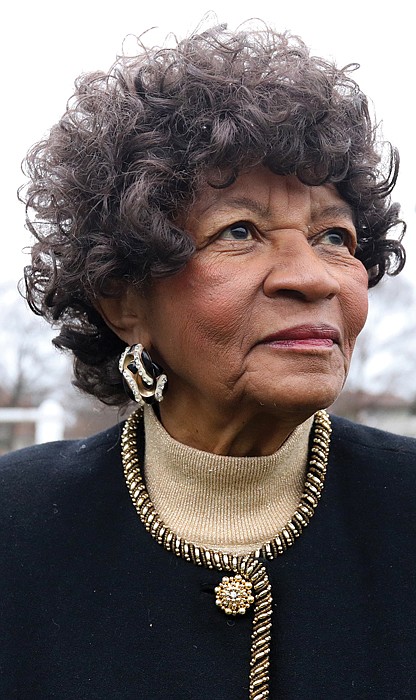REGENIA PERRY ESSAY
THE HARMON & HARRIET KELLEY COLLECTION OF AFRICAN AMERICAN ART: WORKS ON PAPER
The Harmon and Harriet Kelley Collection is one of the largest and most comprehensive traveling exhibitions ever organized featuring works on paper by African American artists from the 19th, 20th, and 21st centuries. The sixty-five works in the exhibition include drawings, etchings, lithographs, watercolors, pastels, acrylics, gouaches, linoleum, and color screen prints. They are a small fraction of the Kelley’s large collection that reads like a "Who's Who” of the masters of late 19th and 20th century African American art.
The works on paper that were gleaned from the Kelley Collection for this exhibition provide a rare opportunity for the public to view master graphics spanning three centuries of African American art. The earliest work in the exhibition is by Grafton Tyler Brown, the first documented professional graphic artist on the West Coast. There are four well-known etchings by Henry O. Tanner, whose prints of the early 20th century were avidly sought-after during his lifetime. One of the most arresting prints in this exhibition is a study of an old woman completed in 1912 by William E. Scott, one of only several artists whom Tanner acknowledged as his students in Paris.
The majority of the works in this exhibition were produced during the 1930s and 1940s, the era of the Great Depression and the Federal Art Projects of the Works Progress Administration (WPA) that provided employment for many artists during and after the Depression. That period gave birth to a school of African American regionalism and black consciousness that would not resurface until the civil rights movement of the 1960s. These works of the 1930s and 1940s were not politically motivated and generally did not depict protest themes. They portrayed African American subjects in rural and urban settings in a bold post-cubistic style. Scenes of factory workers, dock workers, farmers, bridge builders, and road menders were common.
An outstanding graphic artist from an earlier generation, Albert A. Smith completed most of his works in Paris and was probably the first African American artist to produce etchings. The most influential conduit for black regionalism in the mid-west during the 1930s and 1940s was Karamu House (a Swahili word for "a place of joyful gathering") founded in Cleveland, Ohio in 1915 by two social workers as an interracial center for theatre, writing, and the visual arts. Karamu House was the workshop for many African American artists during this period including William E. Smith, Elmer W. Brown, and Charles Sallee, Jr. who is credited with elevating the quality of prints produced under the auspices of the WPA.
Two of the most important graphic artists of the 20th century in the United States, Charles White and John Biggers, are represented in this exhibition. Both men possessed the unique ability to portray sculptural images on two-dimensional surfaces. Biggers is represented by two powerful images, an elderly black male wearing bib overalls and covering his face in despair from 1965, and a 1996 lithograph, At Risk, that depicts the detached head of a black youth floating in a cosmos of symbols. Charles White is represented by three impressive works, a drawing of a night club hostess, an early etching of abolitionist Frederick Douglass, and a lithograph from his renowned Wanted Poster series inspired by confederate currency and pre-Civil War posters offering rewards for escaped slaves. Jacob Lawrence, one of the most highly acclaimed black artists of the 20th century, began his career in New York during the 1930s and is represented in this exhibition by a civil-rights themed Two Rebels of 1963 and the well-known Carpenters color lithograph of 1977. Perhaps the most influential African American graphic artist of the mid-20th century was Robert H. Blackburn who founded the Printmaking Workshop in New York where he supervised the editions of numerous artists including Romare Bearden, Norman Lewis, Benny Andrews, and Ernest Crichlow. Blackburn's work is included as is a tribute to him by master draughtsman Ron Adams depicting Blackburn in his workshop in the process of pulling a print.
The 1960s and early 1970s gave birth to the politically motivated and African-inspired art of the civil rights period. Two civil rights-themed works in this exhibition are a 1963 lithograph by Jacob Lawrence entitled Two Rebels and Elizabeth Catlett's well-known print Malcolm Speaks for Us of 1969. Catlett's Sharecropper of 1952, a decade earlier, attests to the sculptural character of her graphic works. Walter Williams, an expatriate artist residing in Denmark during the 1960s, produced haunting images of black children in bucolic landscapes with flowers and butterflies is represented by Thistle, a four-color block print of 1966.
The works from the late 20th and early 21st century continue the Kelley’s quest for excellence by focusing on some of the brightest stars of the contemporary generation; Margo Humphrey, Alison Saar, Dean Mitchell, Robert Colescott, Lionel Lofton, Charles Criner, and self-taught artists Bert Long and Ike E. Morgan. A refreshing end-note to this exhibition is two late works by second generation masters of the 1930s, 1940s, and 1950s. Eldzier Cortor is represented by an octagonal Dance Composition produced during the 1990s when he was well into his eighties. The print reflects his trademark elongated figures against a complex geometric background. The result is a work as vigorous and impressive as any of his creations of a half century earlier. Lois Mailou Jones' color screen print of 1991, Le Jardin du Luxembourg, produced when she was 86, is testimony to her life-long love affair with her adopted city, and is as vibrant as the prints and paintings she produced in Paris when she moved there during the 1930s and was profoundly influenced by post-impressionism and African art.
Regenia A. Perry, Ph.D.
Professor Emerita of African and African American Art
Virginia Commonwealth University
Richmond, VA

Dr. Regenia A. Perry
